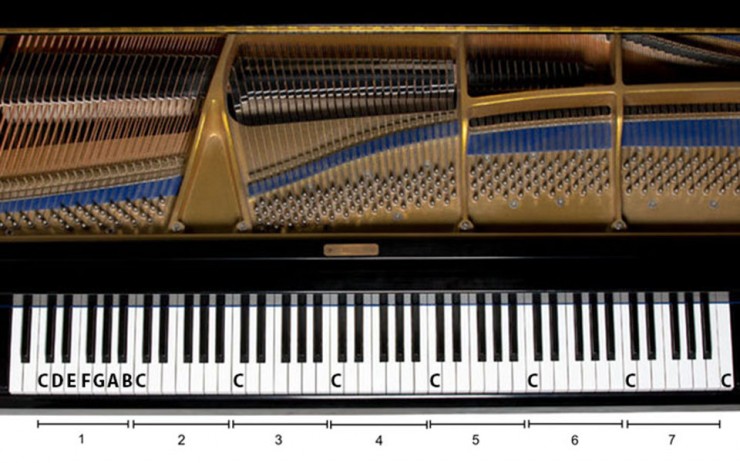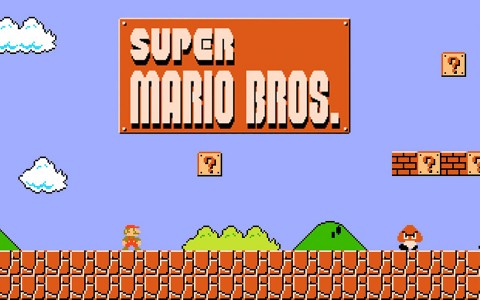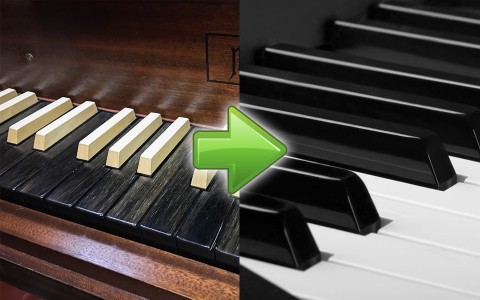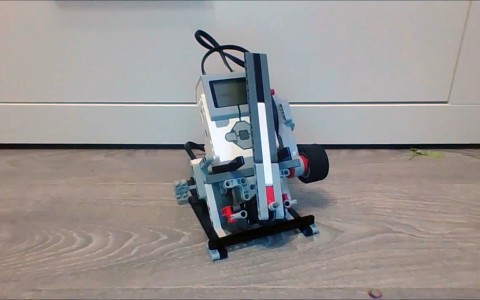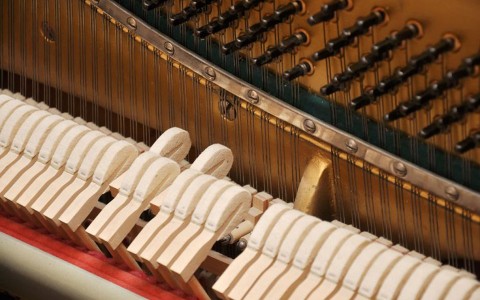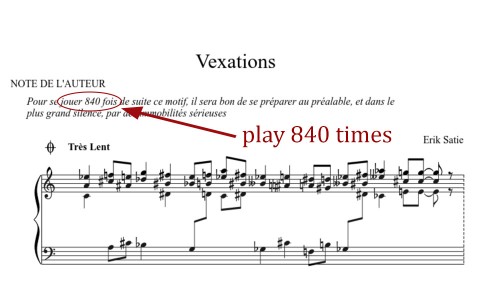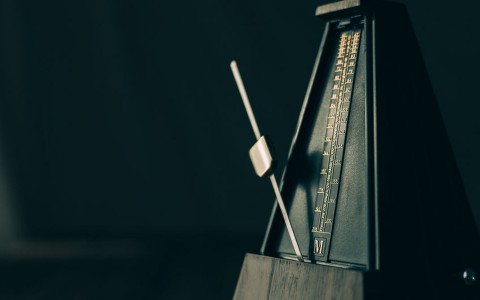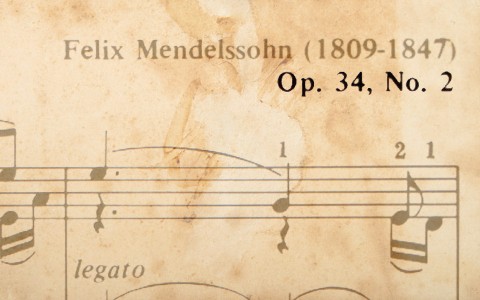You might have come across the phrase "lower register" or "higher register" of a piano. For example, a piano theory book might mention that the Bass Clef is designed to help a pianist read the notes in the lower register of the piano. In his book, The Art of Piano Playing: A Scientific Approach, George Kochevitsky wrote that "a fast succession of lower tones is more difficult to perceive than one of higher tones because of the overtones. Therefore, what sounds clear in a higher register would sound muddy in a lower register". Have you guessed what is a piano register?
A modern piano has 88 keys. It starts from the musical note A, then B, C, D, E, F, G, and it's A again, then B, C, D, E, F, G, and so on. The note A to the immediate next A gives you an octave. Similarly, the note C to the immediate next C gives you also an octave. Thus, 88 keys on the piano is a full 7 and 1/3 octaves, and this corresponds to 7 registers. The first register is on the extreme left, and the 7th register the extreme right. Each successive register contains notes with a higher pitch than preceding one.
In each register, white keys are labelled using notes from C-major scale. Each label consists of a musical note letter, followed by the register number. D2 refers to the D note in the 2nd register, while G3 refers to the G note in the 3rd register. Our Middle C falls in the 4th register, and it will be labelled as C4. The lower registers refer to notes that are below the Middle C, while the higher registers refer to notes that are above the Middle C. For example, C1, F3, and B3 are in the lower registers; and D5, G6 and A7 in the higher registers.
